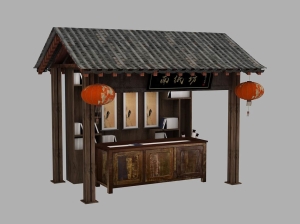为了书写文字,记录信息,人类历史上出现过各种各样的书写材料,比如泥板啊、莎草啊、牛羊皮、甲骨、竹简、缣帛等等。但是这些书写材料都有很大的弊端,要么书写不方便、要么保存困难、要么造价昂贵。直到西汉时期中国人发明了纸,东汉时期,又经过蔡伦改进造纸术,纸成为无与伦比的最佳书写材料,在性价比上直接碾压了之前所有文字载体,成为了中国影响世界的四大发明之一。那么蔡伦改进的造纸术,究竟是怎么造纸的呢?我们去看一看南纸坊后面的展板。
To write and record information, various materials were utilized across human history, such as clay tablets, papyrus, cowhide, sheepskin, oracle bones, bamboo slips, silk, and more. However, all these materials had evident disadvantages, either in how inconvenient they were to write on, difficulty to maintain, or in a debilitating cost. This problem remained until paper was invented in the Western Han Dynasty and later became the most optimal writing material after Cai Lun improved upon papermaking technology during the Eastern Han Dynasty. Paper overcame all previous writing materials based on cost and was listed as one of four globally influential inventions of ancient China. So how did the improved papermaking techniques by Cai Lun make paper? Let’s take a look at the display panel behind the Paper Workshop.
在这里,我们可以看到中国古代用竹子造纸的五个步骤,这五个步骤简单说,就是先把原材料浸泡去皮,加入石灰一起煮烂,然后把纸浆用竹帘捞起来,压干水分、烘干,这样就可以得到纸了。
Here is an illustration of the five steps for making paper with bamboo in ancient China. To summarize, you soak bamboo to remove its bark, cook it with lime, collect the paper pulp with a bamboo screen, dry it, and you end up with paper.
通过丝绸之路,造纸术传播到了世界各地。在左边的传播路线图上您可以看到,纸张,首先是从公元3世纪左右,向东传播到了朝鲜、日本等地区,在唐代,又向西传播到了中亚地区,并在13世纪左右传播到了欧洲。
Papermaking technology spread all over the world thanks to the Silk Road. As you can see from the route map on the left, paper first spread eastward to North Korea and Japan in the 3rd century and then spread westward to Central Asia during the Tang Dynasty, and finally to Europe around the 13th century.
接下来,我们去南纸坊的对面去看看印刷术。
Next, let’s go to the opposite side facing the Paper Workshop to see ancient Chinese printing.




















 京公网安备11010502039775号
京公网安备11010502039775号





